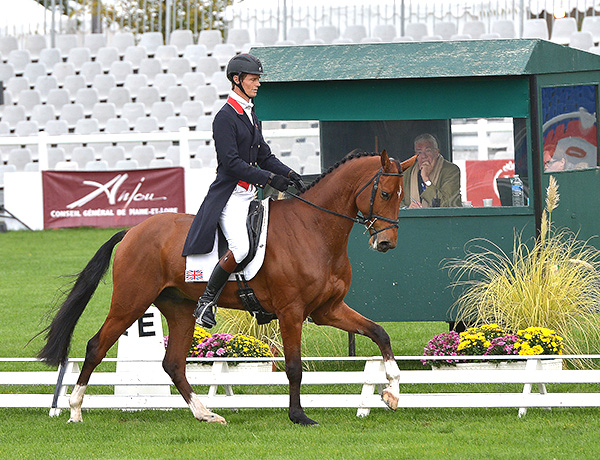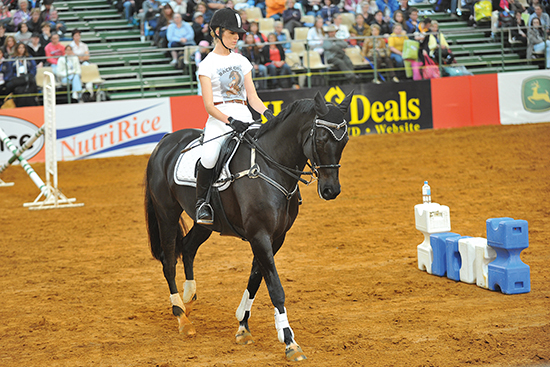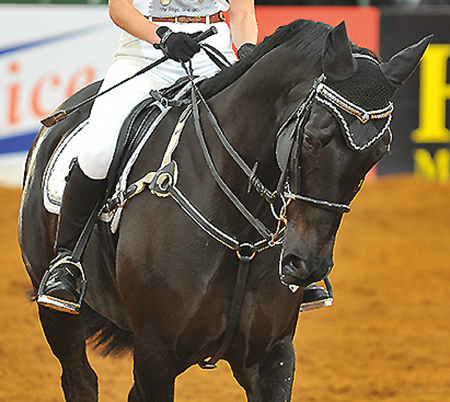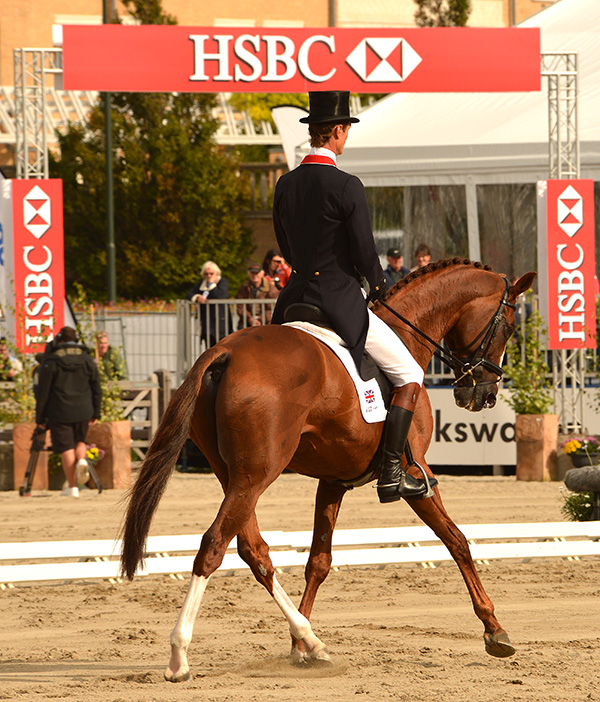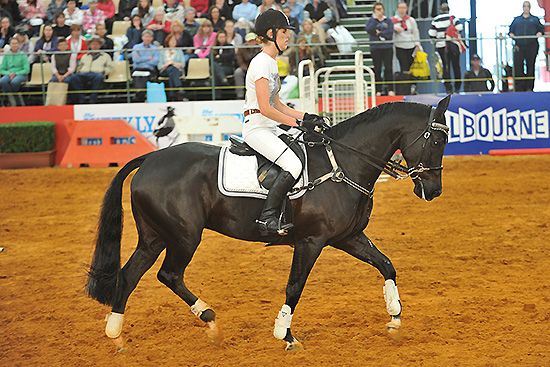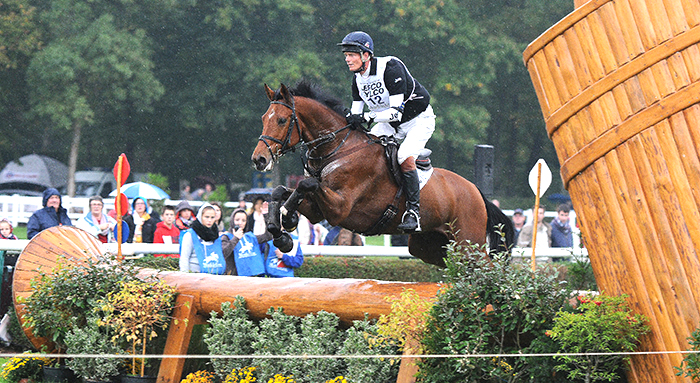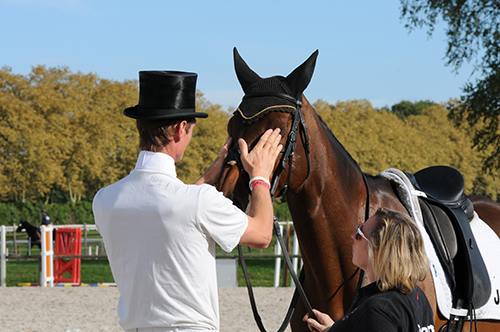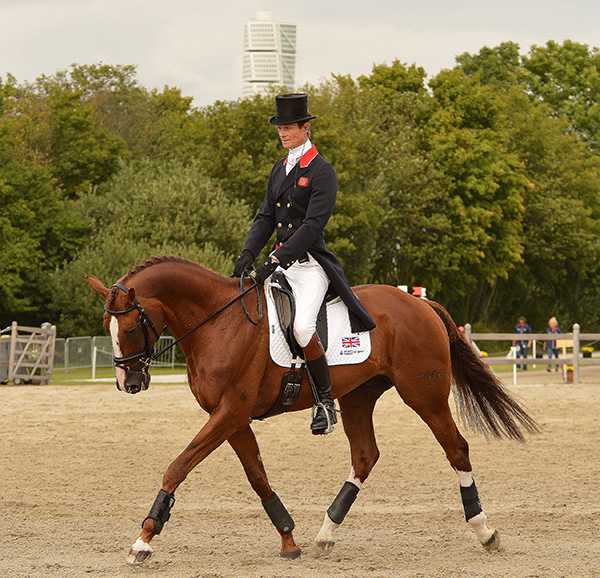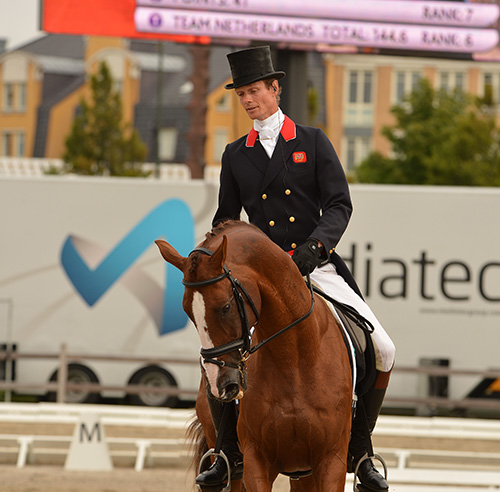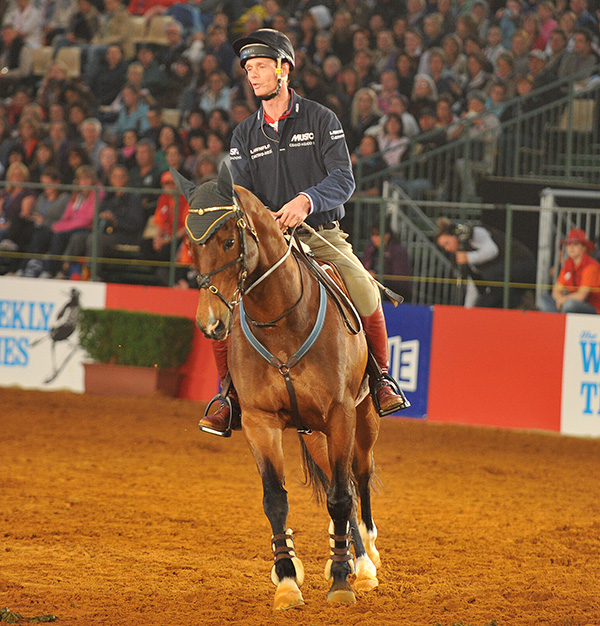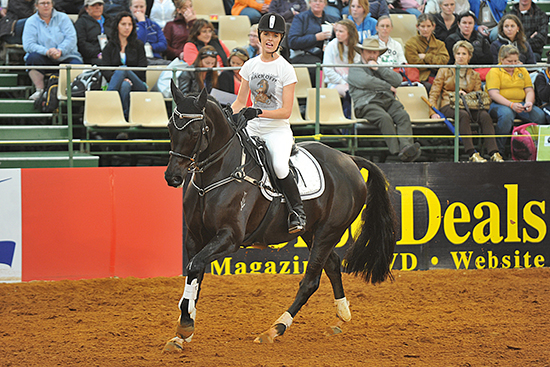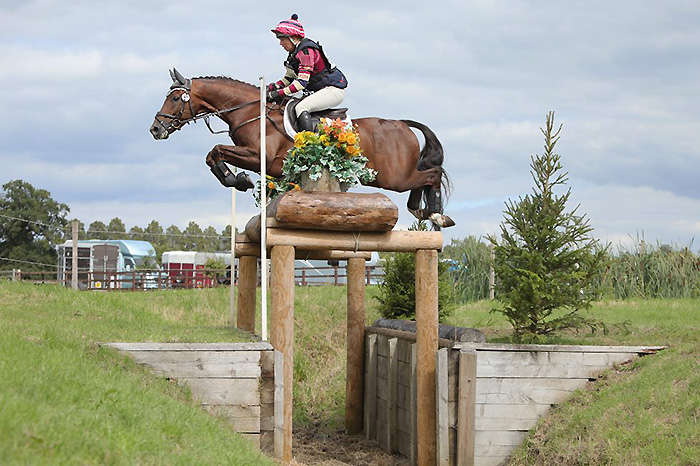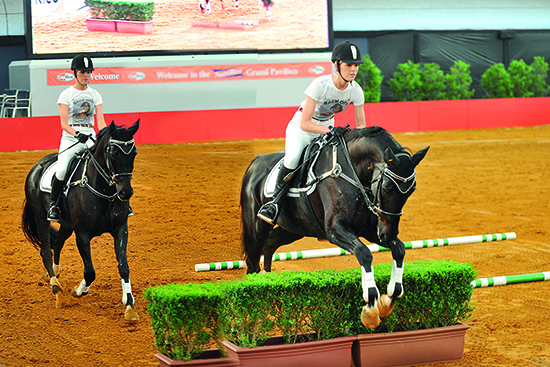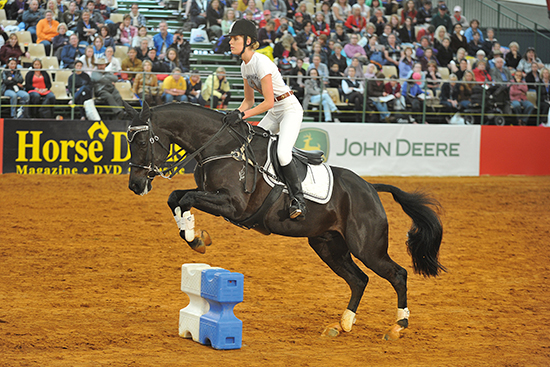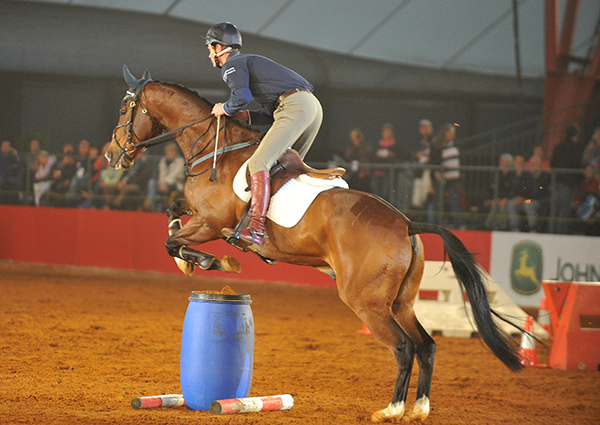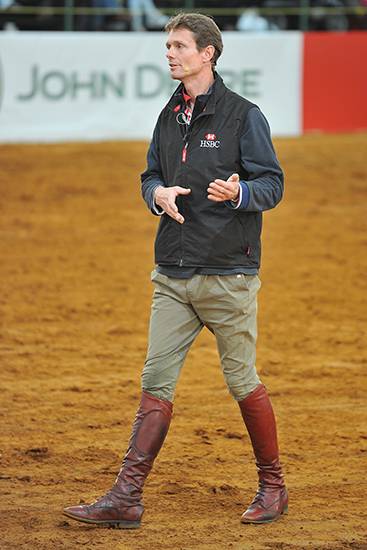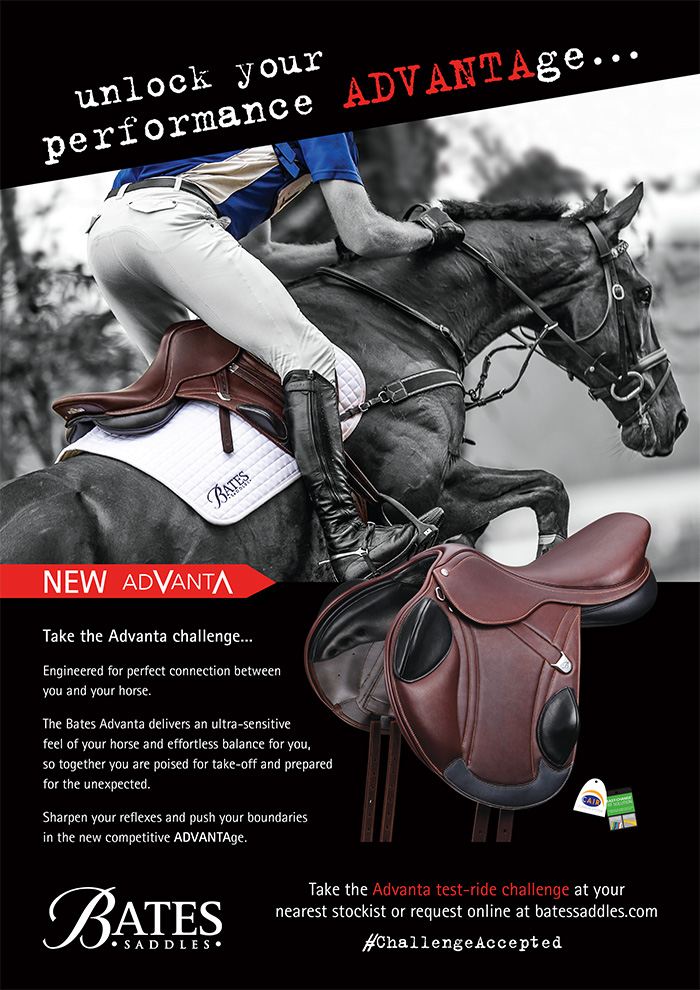Story – Shannan Makauskas and Photos – Roz Neave
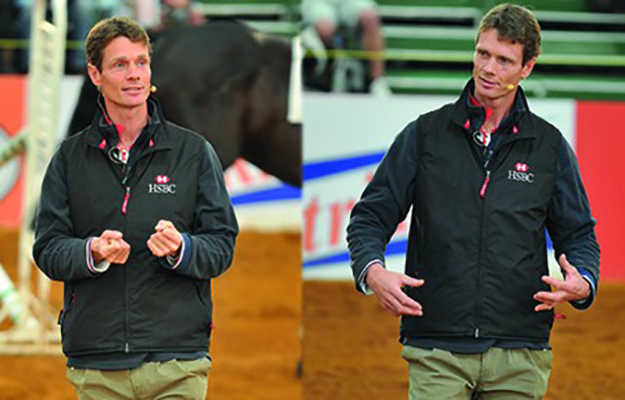 William Fox-Pitt talks about what your event horse needs to know
William Fox-Pitt talks about what your event horse needs to know
– and it’s not just jumping the fences…
“I think it’s vital the rider has a pattern in their mind for a working session, to have a warm up, to have a rest, to have a work period, interspersed with a good rest period as well, and then a warm down period. If you’ve got that basic structure you can then ride your horse in a systematic way, your horses have confidence, because they have a general idea of what you’re going to be doing everyday.”
“I’m a big believer in a young horse knowing how to do a flying change, just simply to go from one way to the other, no more complicated than that. Some horses immediately do it very easily, and some will make a real meal out of it, so it’s important for young horses that it becomes an everyday normality.”
Counter canter at Mondial Du Lyon with young horse, Top Blats
“The warm up is so important, there’s a lot of muscle bulk in a horse, they need to be warmed and stretched before you start to put the hard work in. Start to do a bit of counter canter, a few lateral movements, and I always start with the young horses, once he’s trotting around nicely, a leg yield. It’s very simple, quite rewarding, and a very productive exercise that doesn’t require a lot of training
At a clinic at Equitana, William explained what he was looking for – and what he was not happy to see…While Georgia Connolly and her two-star horse, Maserati, began their warm up, William analysed her choice of tack: “It’s hard to know in one session whether I think it’s good or not. A very simple kit is nice to see on a young horse, this chaps got a bit of a combination. He’s got a hackamore, quite a gentle hackamore, and a Waterford snaffle.”
William asked Georgia, “He’s quite strong is he?”
“He can be quite strong, but also very sensitive. I like to have the option of two different reins so I can pick and choose.”
“That can be a good combination, some horses do like a hackamore contact. Combined with a bit, hackamores sometimes teach the horse to be rounder, they make the contact better. I think with all the people here, it’s better Georgia’s got more control rather than less control, although it’s less interesting for us perhaps,” he laughed.
They got back on to the subject of warm ups, starting with a leg yield: “Just keep it simple to begin with and stay in rising trot. I want it to be very regular, very smooth, I want the horse’s bend to be equal throughout the movement, and I want the horse’s cross-over to be straight.”
Leg yield leads to half pass, William and Cool Morning demonstrate
Accuracy is important right from the beginning: “Come around, get your target and prepare for it. Look where you’re going, even though it’s warm up you could pay more attention to the details. That way, when you turn that into a travers or a half pass, you’ve got the precision you want, you’ve got a horse that is staying on his line every stride. It’s quite easy when you’re doing the warm up to think, oh well it doesn’t really matter. As far as the horse is concerned if he’s always used to doing the same thing – keeping that stride, keeping that rhythm, when you change it to a more demanding movement, the habit is there.”
After a few leg yields, Georgia had Maserati showing lovely swing and rhythm in the trot: “He’s relaxing very nicely. Straight away he’s quite pleasing on the eye, he’s a bit of a Warmblood, but he can’t help that.”
William and Top Blats at Mondial Du Lyon over the last fence
It’s clear where William’s allegiance lies when it comes to breed: “There’s nothing better in my mind than a really good Thoroughbred, but in the event horse there is often some Warmblood in there now. It helps with the jumping and the dressage, and provided you’ve got a Warmblood that’s got enough stamina and quality about it, I think they can cope pretty well cross-country.”
“Always be brave, ride for a quality walk, even though we’re not necessarily doing a test. It’s really important in training that you ride the horse as much as you can, exactly as you’re going to in the arena.”
“I think that’s something we all find, you ride a certain way at home, and then you go to a competition and you suddenly don’t. The horses are bound to get confused. It’s why they jog in the walk, it’s why they break in the canter, and it’s why things go wrong, because suddenly they’re confused. Be very clear – training at home I ride like this, in the arena I’m still riding like this. Then he will join you, he will learn there’s no difference. If we’re always riding a different way in the competition arena, they learn the arena is a stressful place to be.”
“If he’s jogging at home, he’s suddenly going to be jogging in an arena at a competition. I’d be focussing on that and getting him to be very confident, keeping the leg on, and riding out that walk.”
Communicating with your horse, William keeps it black and white:
“As far as he’s concerned there’s a collected, there’s a medium, and there’s an extended walk, and that’s it. There doesn’t need to be a fast or slow one, half long rein, half short rein, make it as clear as you can.”
They moved on to the trot, varying the pace and putting in the work to pick-up a collected frame: “You can see here he’s got a tendency to get short in the neck. Therefore it’s very important to get this horse taking the rein forward. We do that with plenty of half halts to shorten him behind, then plenty of releasing and taking the reins forward.”
“All this stuff on the flat in the trot is vital when it comes to jumping. A horse that will shorten its neck when he’s doing flatwork will also do that when he’s coming into a fence, when you want him to go down. He’s got to learn that when the rider wants him to come back, he comes back from his hind end. Relax him forward, you could ride him a little less on the hackamore, let the hackamore rein go a bit.”
William worked on Georgia’s half halts: “When you’re there in the trot, in the downward transitions, you could just flex him, keep more softness, then drop your hand again. You’ll find in the long run that the half halt and the engagement will bring his head up, not your hands.”
“Play with the canter, shorten him, move him on, have him come back on your weight and your leg, then lengthen the rein.”
Georgia spoke-up about an issue she was having – the horse becomes tight in the canter and then changes behind, becoming disunited. William had a solution: “I always find what helps is to keep sitting very soft, he’s not totally around your inside leg from what I can see here. So if I ask for an exercise that asks him to bend in his body, your inside leg is coming into play, which is transferring the weight onto the wrong leg behind (the outside hind leg) and making him change. Don’t let your inside leg come back because then you’re going to push the quarters over and he’ll change behind. You’ve got to bend him in the middle, without encouraging him to change with his back end.”
William wanted the horse more supple through the body, in order to fix the issue: “Sometimes I use outside flexion, just to soften him, stretching through the inside of his body. When you bend to the left, release the rein so he takes it forward, he’s just got to come through his body more. I’d say in the trot and the canter, you’ve got to have him curved around the inside leg more.”
William still had a few tips: “The position of the rider is good, the only thing I focus on slightly when I’m watching is the hands, and I can see why that happens. The horse is sometimes on and off the rein, he’s not always bending the way she wants. So the hands tend to come into play, focus goes on the mouth, and then you get tension in the back end. But the rider’s position through the body is very pleasing, very neutral, very comfortable. If the rider sits like that, life is easier for the horse.”
more follows the advertisement
Breeding your champion event horse in Australia? Go to www.ihb.com.au for the best bloodlines in the world – stallions like Britannia Royal
“Let’s give him a jump”, said William as he gestured to the cross bar: “I nearly always start in trot. There’s the odd horse I have, that at the end of the day is so useless in trot, they’re better off staying in canter. But generally I like to start in trot.”
William’s prediction, that the horse’s tendency to shorten the neck in the flatwork would affect the jumping, proved true: “Be careful his nose isn’t behind the vertical coming into a fence. I want the nose to be drawn towards the fence on the last few strides so he can come through his back. You can see it’s the same as in the flatwork, when she pulls the reins the nose comes in and if that happens with jumping, the focus doesn’t stay on the fence, and the back end can become tight.”
Heeding this advice, Georgia made a second attempt: “That was better. When the horse comes in on a good stride, Georgia can leave him alone, and the nose stays forward. But you can literally see, every time Georgia makes a half halt on the horse, he does that (nose comes in). When you make your half halt, he’s got to stay up in his frame and looking at the fence.”
“Be careful you don’t try to change the frame with your hands all the time. You can say wake up, but then put your hands down. Come down the grid here in trot but slacken off your hackamore. See if he’ll draw his nose towards the jump, hands down.”
When it came to the narrow fences, Georgia had Maserati’s mind on the job: “He’s very confident with that, he’s looking at what he’s got to do and taking you to the fence. Just keep your hands wider, forward and soft, he found that very easy.”
William demonstrates postition with Australian Thoroughbred, Top of the Line
“When you’ve got an event horse as relaxed as this, your life is so much easier. You’re not then having to work on keeping him straight, you haven’t got the horse worried about what he’s doing. The best thing you can do is get things familiar to them in training, so on cross country they become confident and everything is easy.”
This article first appeared in the March 2011 issue of THM.


